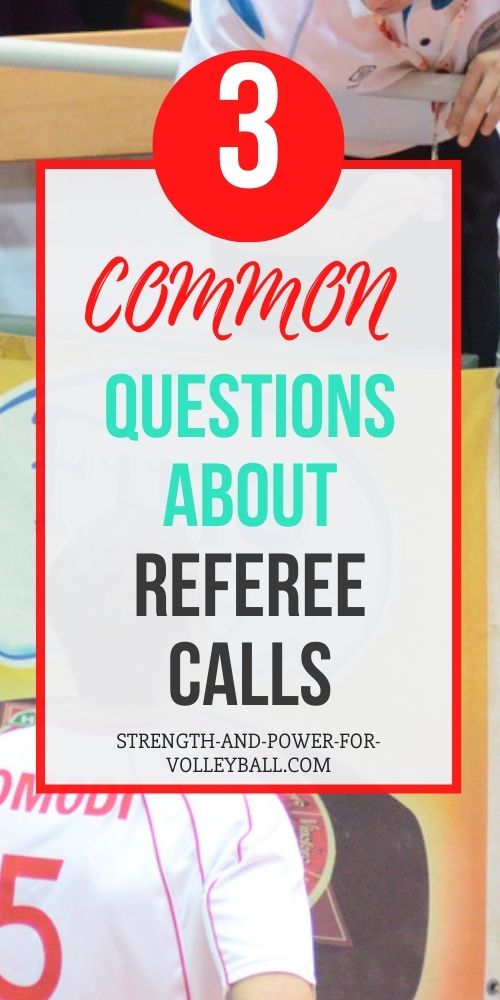What are the Volleyball Calls?
Learn about volleyball calls made by referees.
The follow are the most common hand signals you see in volleyball.
Signal to Serve
The referee moves the hand across the chest to signal the player to serve the ball.
Team Gets the Ball
The referee extends the arm to the side of the team that will serve.
Change of Courts
Make a fist with both hands and turn the arms around the body front and back. Basically, twist them around the body to signal the teams to change courts.
Timeouts
To signal a timeout, place the palm of one hand over the fingers of the other. This forms a T. Then point with the hand in the direction of the team that is charged the timeout.
Substitutions
Make circular motion of the forearms around each other.
End of Set or Match
Cross the forearms in front of the chest with the hands open.
Ball Not Tossed or Released at the Service Hit
Extend the arm forward and lift up with the palm facing upward.
Delay of Service
Raise the hand up signal 8 fingers.
Blocking Fault or Screening
Raise both arms up, hold in a vertical position with palms forward.
Positional or Rotational Fault
Make a circular motion with the forefinger.
Ball “In” Signal
Point the arm or fingers toward the floor.
Ball “Out” Signal
Raise both arms up, elbows to 90-degree angle, with forearms parallel torso. Palms are facing the body with no space between fingers.
Catch
To signal a caught or thrown ball, slowly lift the forearm, palm of the hand is facing upward.
Double Contact
To signal a double contact, raise two fingers and spread them apart to signal two hits.
Four Hits
To signal four hits, raise your hand up, spread 4 fingers apart.
Illegal Touching of the Net
Reach out and touch the net with the hand, indicating which side was in the net.
Reaching Beyond the Net
Place a hand above the net, palm facing downward.
Attack Hit Fault
Raise the arm up vertically, then make a downward motion with the forearm while keeping the hand open.
Crossing the Centerline
Point the centerline with the index finger.
Replay Signal
Raise both thumbs vertically.
Ball Touched
Place hand in front of you, palm facing you, then brush fingers of the opposite hand once over the palm that’s vertical.
Line Judge Signals (using a flag)
Ball In
Point the flag down.
Ball Out
Raise the flag up vertically.
Ball Touched
Point flag up and touch the top of the flag with the palm of the free hand.
Ball Crosses the Net Outside the Crossing Space
Wave the flag high overhead and point with the finger to the antennae
Impossible to Make the Call
Raise and cross both arms and hands in front of the chest.
Common Questions about Volleyball Calls
What is an illegal hit in volleyball called?
Illegal hits are either multiple contacts or caught or thrown ball.
The ball can’t roll on the body. Rolling is contacting multiple body parts. Double hits are legal on the first team contact provided the contact is made during a single attempt to play the ball. Two attempts by the same player in succession is illegal.
Can a libero Spike?
The Libero may serve, but cannot block or attempt to block. The Libero may not spike a ball from anywhere if at the moment of contact the ball is entirely higher than the top of the net. The ball may be freely attacked if the Libero sets the ball with finger action from behind the ten-foot line.
What does 2 fingers mean in volleyball?
When the referee signals two, this means there was an illegal double contact. Double contacts are legal on the teams first team contact. If you double contact the 2nd or 3rd team contact, then this would be when the referee would blow the whistle and signal two hits.
If you enjoyed these tips and would like to keep it close to you at any time, just save this pin to your Pinterest Volleyball Training Board.
Volleyball › Basic Volleyball Rules › Volleyball Calls
